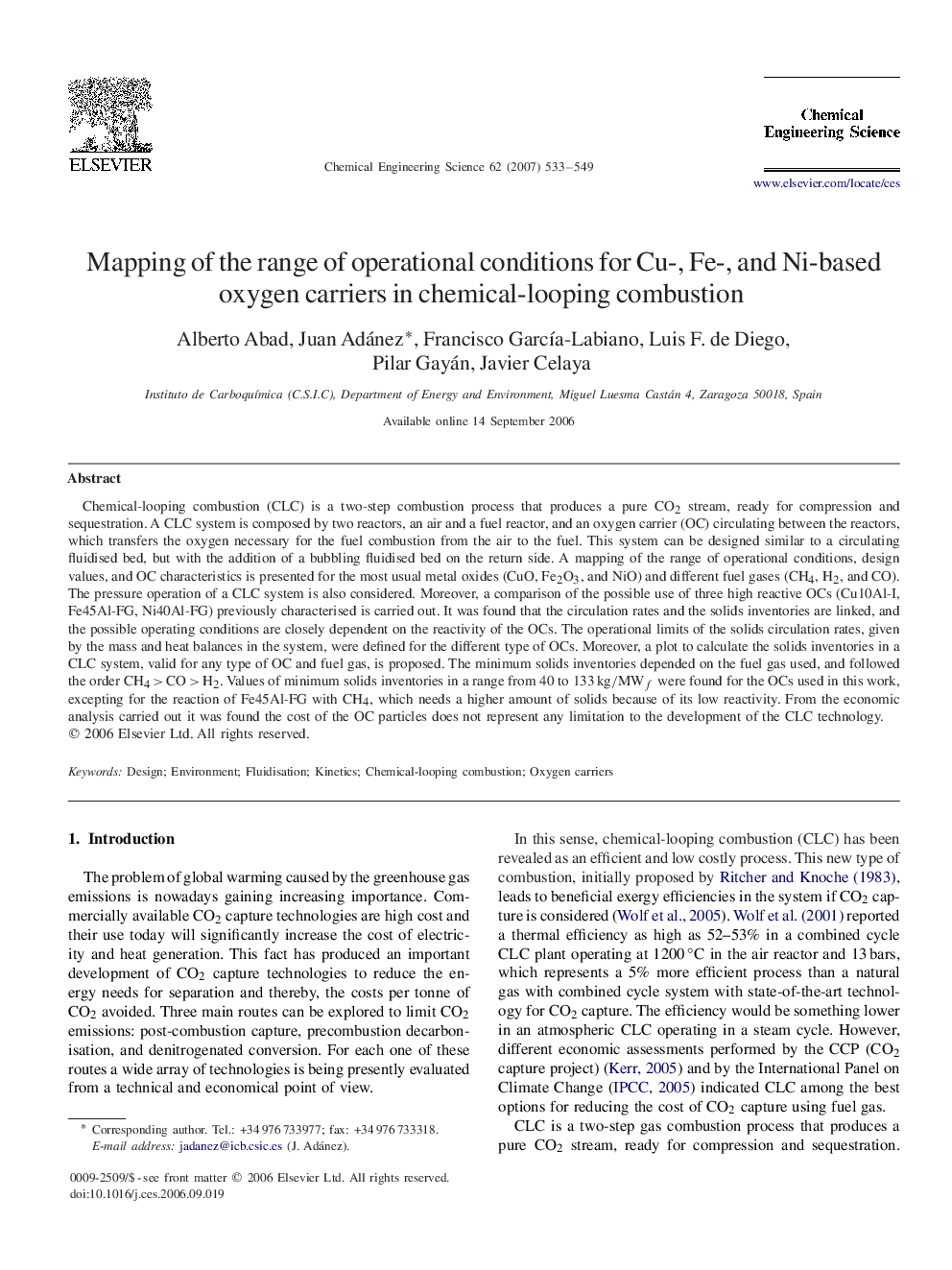| Article ID | Journal | Published Year | Pages | File Type |
|---|---|---|---|---|
| 160380 | Chemical Engineering Science | 2007 | 17 Pages |
Chemical-looping combustion (CLC) is a two-step combustion process that produces a pure CO2 stream, ready for compression and sequestration. A CLC system is composed by two reactors, an air and a fuel reactor, and an oxygen carrier (OC) circulating between the reactors, which transfers the oxygen necessary for the fuel combustion from the air to the fuel. This system can be designed similar to a circulating fluidised bed, but with the addition of a bubbling fluidised bed on the return side. A mapping of the range of operational conditions, design values, and OC characteristics is presented for the most usual metal oxides (CuO, Fe2O3, and NiO) and different fuel gases (CH4, H2, and CO). The pressure operation of a CLC system is also considered. Moreover, a comparison of the possible use of three high reactive OCs (Cu10Al-I, Fe45Al-FG, Ni40Al-FG) previously characterised is carried out. It was found that the circulation rates and the solids inventories are linked, and the possible operating conditions are closely dependent on the reactivity of the OCs. The operational limits of the solids circulation rates, given by the mass and heat balances in the system, were defined for the different type of OCs. Moreover, a plot to calculate the solids inventories in a CLC system, valid for any type of OC and fuel gas, is proposed. The minimum solids inventories depended on the fuel gas used, and followed the order CH4>CO>H2CH4>CO>H2. Values of minimum solids inventories in a range from 40 to 133kg/MWf were found for the OCs used in this work, excepting for the reaction of Fe45Al-FG with CH4CH4, which needs a higher amount of solids because of its low reactivity. From the economic analysis carried out it was found the cost of the OC particles does not represent any limitation to the development of the CLC technology.
